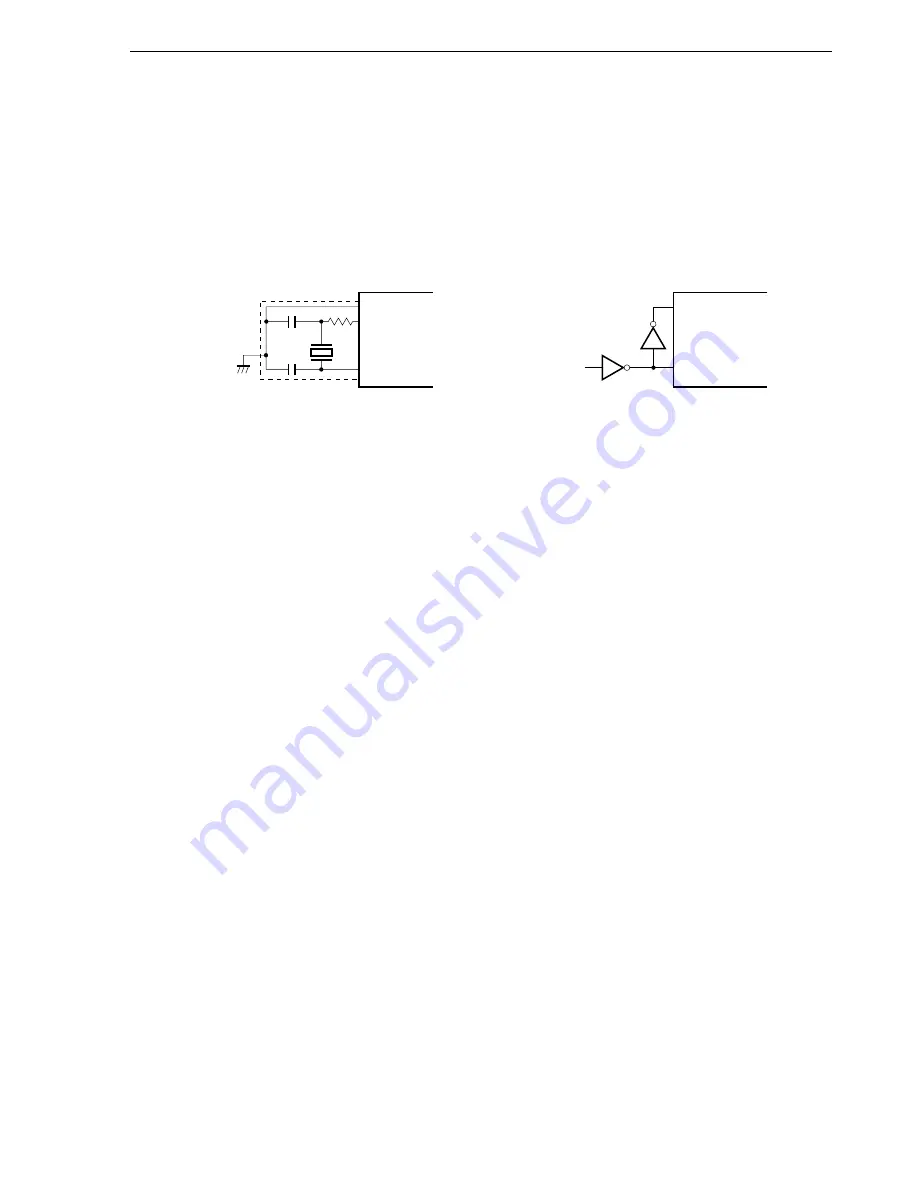
101
CHAPTER 4 CLOCK GENERATOR
User’s Manual U12697EJ3V0UM
4.4.2 Subsystem clock oscillator
The subsystem clock oscillator oscillates with a crystal resonator (standard: 32.768 kHz) connected to the XT1
and XT2 pins.
External clocks can be input to the main system clock oscillator. In this case, input a clock signal to the XT1 pin
and an antiphase clock signal to the XT2 pin.
Figure 4-7 shows an external circuit of the subsystem clock oscillator.
Figure 4-7. External Circuit of Subsystem Clock Oscillator
(a) Crystal oscillation
(b) External clock
Cautions 1. When using a main system clock oscillator and a subsystem clock oscillator, wire as follows
in the area enclosed by the broken lines in Figures 4-6 and 4-7 to avoid an adverse effect from
wiring capacitance.
•
Keep the wiring length as short as possible.
•
Do not cross the wiring with the other signal lines. Do not route the wiring near a signal
line through which a high fluctuating current flows.
•
Always make the ground point of the oscillator capacitor the same potential as V
SS1
. Do
not ground the capacitor to a ground pattern through which a high current flows.
•
Do not fetch signals from the oscillator.
Take special note of the fact that the subsystem clock oscillator is a circuit with low-level
amplification so that current consumption is maintained at low levels.
Figure 4-8 shows examples of resonators that are connected incorrectly.
32.768
kHz
V
SS1
XT2
XT1
XT2
XT1
External
clock
PD74HCU04
µ
V
SS1
















































